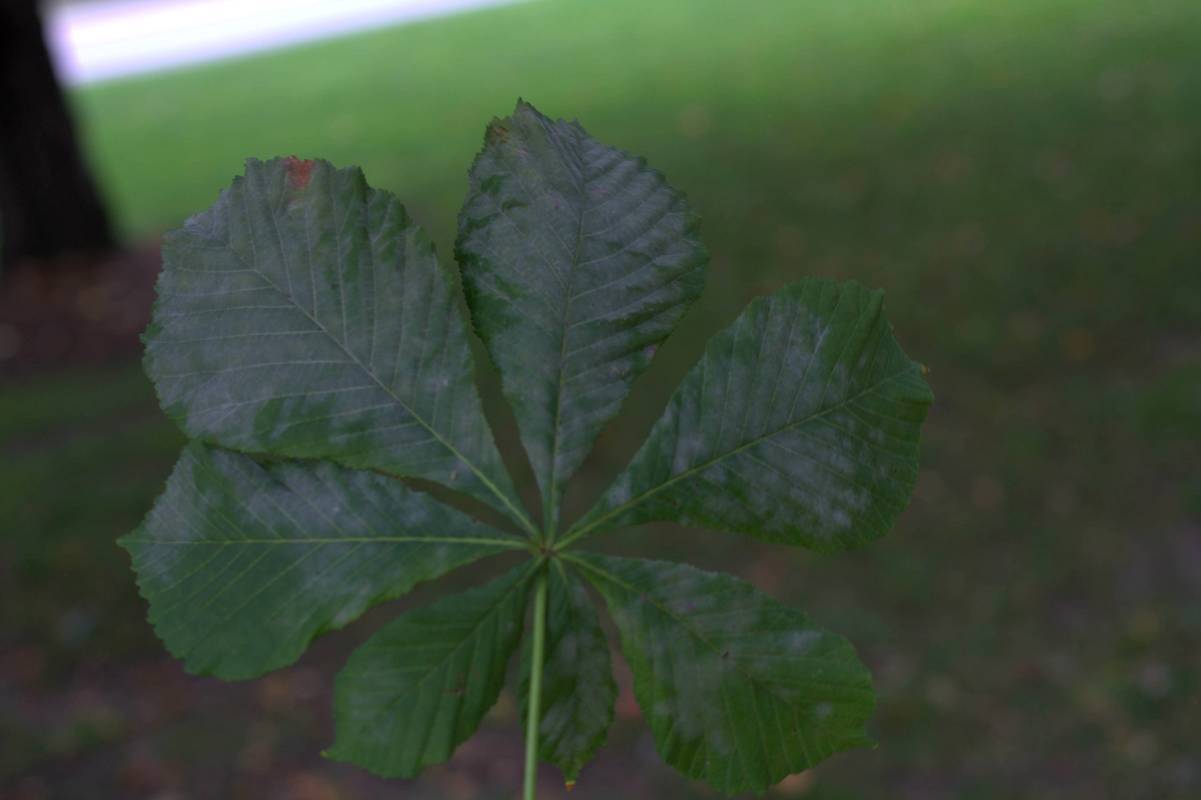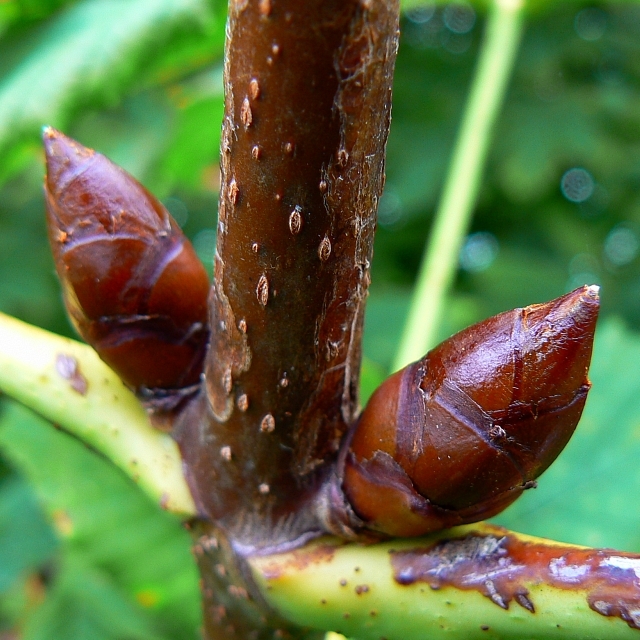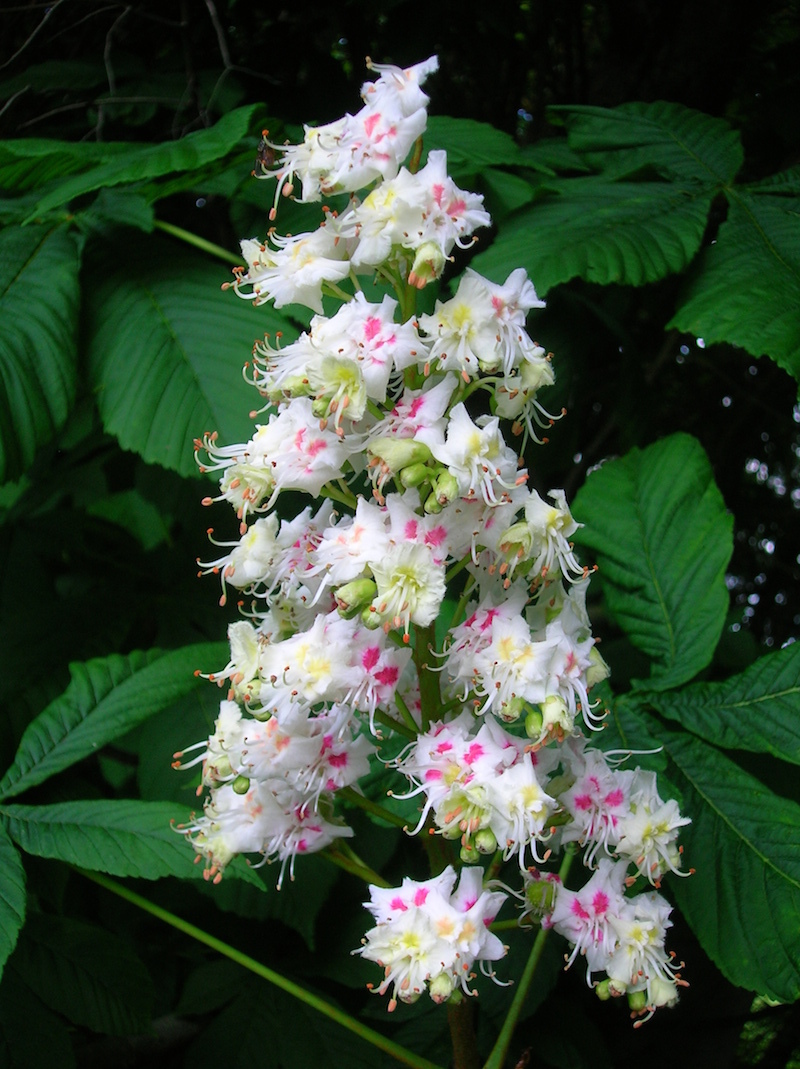Horse Chestnut : What does it look like?
The horse chestnut is a fairly easy tree to identify. Once you know what to look for you’ll start seeing it all over campus (or at least, I did). One of the things that makes the horse chestnut unique is its leaves: you can what I’m talking about in the picture to the left. There are usually 7 (sometimes 5 or 6) stalkless leaflets spreading from a central stem. This is known as palmately compound; the leaflets originate from one central point, and none of them have stems. The leaflet in the middle is usually the biggest, and the leaves on either side are generally symmetric in size. The leaflets are shaped almost like a fat teardrop, but with the rounded end coming to a point. The edges are evenly toothed, meaning they are uniformly jagged. They can be anywhere from 4 to 10 inches long. The leaves are opposite, which means they grow symmetrically on either side of the branch.
Usually, during most of the spring, summer, and fall months, the leaves will be the only feature to identify a horse chestnut tree. But, in case it’s winter, here are some descriptions of other aspects of the tree.
Horse chestnut trees are medium to large trees. They can grow up to 82 feet tall and 5 feet in diameter. They are broadleaf trees, meaning the leaves aren’t needles. Horse chestnuts are deciduous; their leaves turn yellow and fall off in autumn.
The bark of a young tree is usually smooth and light gray, but as the tree matures, its bark turns a darker gray and develops scaly patches that expose the orange-brown inner bark. The twigs are greyish-brown and very smooth, except for the large leaf scars left when the leaves fall off each autumn. These leaf scars are usually in the shape of a horseshoe, which some people believe is where the name “horse chestnut” comes from. The buds are especially distinctive. They are large, ¾ to 1½ inches long, dark brown, and sticky. They are particularly noticeable in winter, after all the leaves have fallen off.
The tree flowers in late spring, usually around May, after the tree has all of its leaves. The flowers bloom in clusters, called inflorescences, anywhere from 8 to 12 inches long, at the tips of the branches. Individual flowers are about 1 inch long, and have four to five frilly petals that curve back to reveal the long, protruding stamens (the reproductive part of the flower). The petals are usually white or cream-colored, with yellow or red spots.
Arguably the most famous part of a horse chestnut tree is its fruit. The fruit begin to develop from the flowers in early summer. They are round, about 2 inches across, and have spiny husks. In the fall, the outer husk splits into two sections, and releases one or two nut-like seeds. These smooth, shiny brown seeds, called horse chestnuts themselves, are usually about 2 inches across, and are used around the world to play the game Conkers. (More about the game in the Conkers section.)




